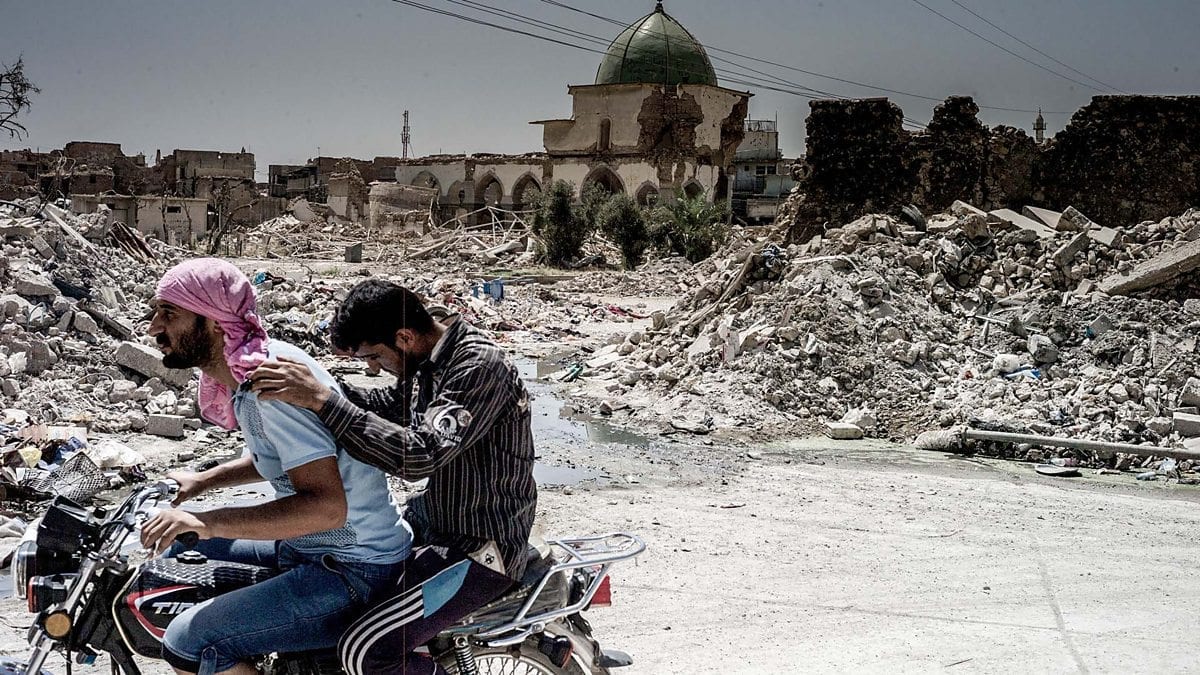First aired on July 13th on BBC2 (and now available on BBC iPlayer), Once Upon a Time in Iraq covers a great deal in its five episodes, delving deep into the chaotic quagmire of the Iraq War. Beginning with the horror of 9/11, which provided the catalyst for the swift invasion and toppling of Saddam Hussein, the documentary exposes a series of failures by the American and British allied forces to reconstruct Iraq in the image they had promised, whilst bravely battling against remaining rebels and terrorists organisations in locations such as Baghdad, Fallujah and Mosul.
The overarching issue which the documentary portrays throughout its five episodes is the lack of a cohesive vision for Iraq’s future from the Western powers. President George Bush and Prime Minister Tony Blair believed that by removing Saddam and his hordes of WMDs (Weapons of Mass Destruction), which, unsurprisingly, were never found, Iraq would transform itself into a liberal, democratic state, free from dictatorial clutches. It almost seems silly now. Rather than portray this politico-military mayhem through the eyes of politicians, the documentary instead focuses on the people who were there, both Western and Iraqi, to lament their experiences in their own words.
Without a concrete vision and strategy, all military conflicts are doomed to fail. The Iraq War, as the documentary exposes, was an example of this lack of military organisation, shown through the initial invasion and subsequent occupation of Iraq. The documentary clearly demonstrates how allied soldiers struggled to identify who their enemies were, and the nature of their overall objective.
Soldiers like American Lieutenant-Colonel Nate Sassaman were given no guidance on what they were meant to achieve with the land and the people they presided over in Iraq. The second episodes follows Sassaman as he recalls how he attempted to peacefully occupy the most hostile, pro-Saddam area in Iraq: the Sunni Triangle. However, with no clear objective from his commanders, Sassaman explains how he became frustrated in his mission to bring about peace. After the death of Staff Sergeant Dale Panchot in November 2003, Sassaman’s downward spiral into a corrupt occupier, turning villages within his land into barbed-wire prisons, began. As the documentary depicts, Sassaman’s draconian, ruthless suppression presented no alternative to the man he had just overthrown.
“Once Upon a Time in Iraq is the first documentary which tells the terrible story of the Iraq War through the eyes of the people who were there – the interviews are raw, oozing with the painful reality that only war can supply.”
Sassaman’s actions and the events that surrounded him are described by Dexter Filkin, a New York Times reporter who was in Iraq throughout the invasion and occupation, as “a perfect microcosm for what happened in the war at large”. Filkin originally describes Sassaman as “the most impressive officer [he] met in Iraq”. But as the number of Iraqi insurgents began to increase, and violence towards the occupying military rose, allied forces set about dehumanising, degrading and detaining Iraqis without prejudice.
Comparing Sassaman to the ISIS terrorist (who goes unnamed in the documentary) interviewed in the final episode, one sees the opposing sides of the conflict. Whilst holding opposing moral views and ideas, both undoubtedly began their lives as good men, trying to do right by their families and compatriots. But ruthless military conflict, coupled with a lack of objective, can corrupt even the best of men.
The documentary details how a lack of overall objective in Iraq caused the corruption of soldiers and civilians during conflict, increasing the level of violence, which resulted in the suffering of innocent people. The documentary interviews Alaa, an Iraqi who lost one of her eyes as a child when she was wounded by shrapnel from an American Humvee that was destroyed by an RPG; and Mustafa, who lost one of his legs as a child when he was caught in an explosion in Fallujah as the Americans were infiltrating the city. The documentary portrays these accounts as a direct result of the lack of cohesion and control the allied forces possessed over Iraq. It exposes the fact that Western powers were never in control, something which at the time the respective Establishments were assuring people they had. These accounts which the documentary includes are only two of countless other instances where innocent people were caught in allied forces-insurgent crossfire.
Ultimately, the documentary details the slow erosion of Iraq into complete chaos, allowing the rise of Al-Qaeda and ISIS over a decade after the initial invasion. No other documentary has detailed the conflict, in particular its decade-long aftermath, like this one. It exposed in detail how the so-called ‘objectives’ of stability and reconstruction were undermined by the decisions of the Western establishments – spearheaded by America – to completely dissolve both the Ba’athist Party and Iraqi military. These two orders sealed the West’s fate in Iraq, as well as Iraq’s own.
Once Upon a Time in Iraq is the first documentary which tells the terrible story of the Iraq War through the eyes of the people who were there – the interviews are raw, oozing with the painful reality that only war can supply. The underlying question that the documentary poses, made more stark by the emotions of those interviewed, is this: What was it all for? When the searchlight of hindsight is placed upon the wreckage that used to be Iraq, it must be recognised that the West brought nothing but pain and suffering upon a nation that had been through much terror and violence already. Iraq was not perfect before 2003; no one disputes that. But was it better then than it is now? Anyone who watches this documentary will undoubtedly conclude: yes, it was.
Words by William Cooper
